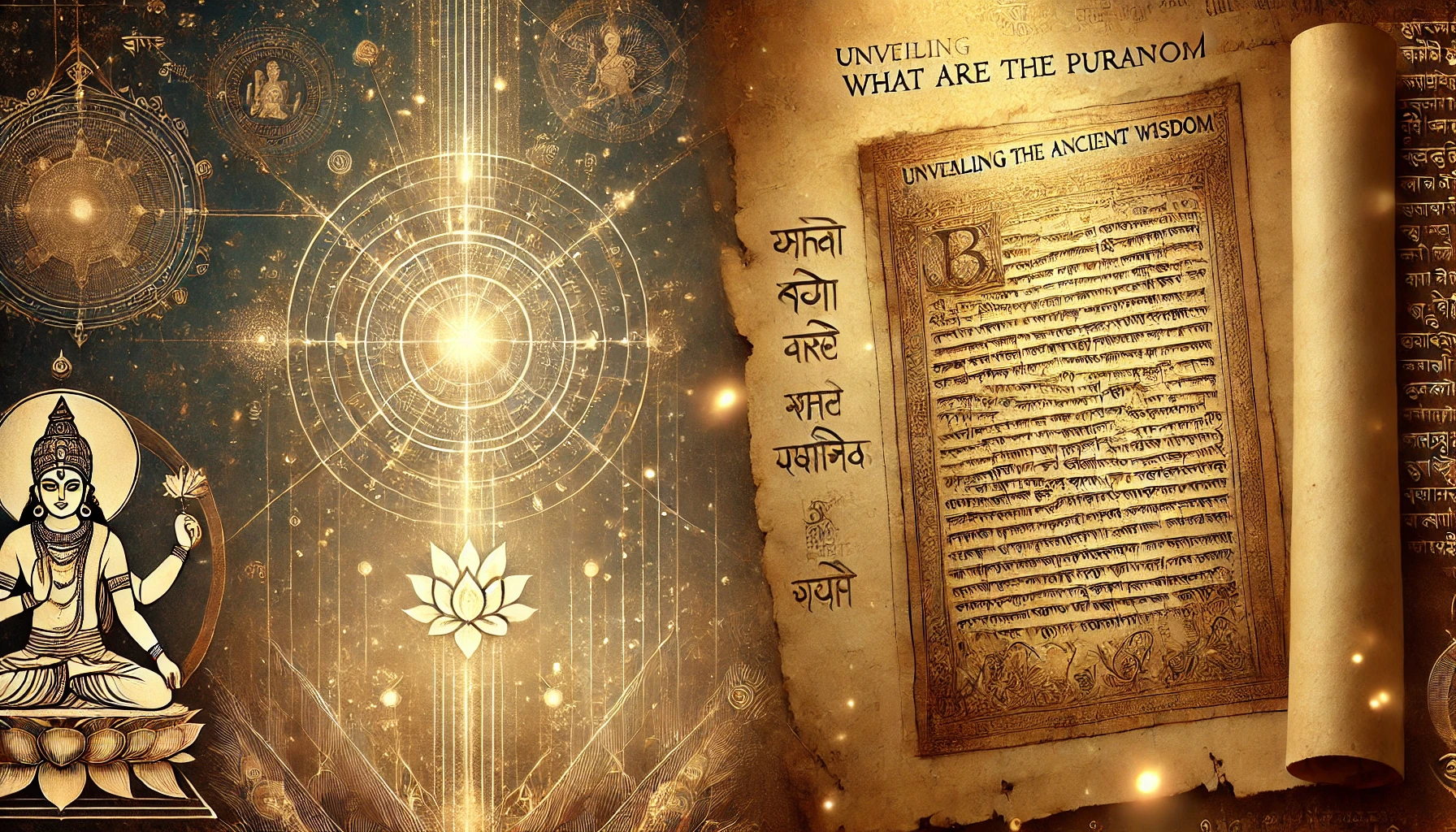Introduction:
The Puranas are some of the most revered texts in Hinduism, offering timeless wisdom and stories that bridge spirituality and practical life. Rooted in ancient traditions, these texts serve as cultural and spiritual encyclopedias, blending mythology, history, ethics, and science. But what exactly are the Puranas? When were they created? And why are they significant today? Let’s explore.
What Are the Puranas?
The term “Purana” comes from the Sanskrit word “Pura,” meaning “ancient,” signifying their origins in antiquity. Collectively, the Puranas narrate tales about:
- Cosmology: The creation, preservation, and destruction of the universe.
- Genealogies: The lineages of gods, sages, and kings.
- Philosophy and Ethics: Teachings on Dharma (righteousness), Karma (action), and Moksha (liberation).
- Practical Knowledge: Rituals, astrology, Ayurveda, temple architecture, and governance.
These texts combine storytelling with profound spiritual lessons, making complex Vedic philosophies accessible to all.
Why Are the Puranas Significant?
- Preserving Cultural Heritage: The Puranas act as a treasury of Indian traditions, festivals, and values.
- Simplifying Vedic Knowledge: They break down the complex teachings of the Vedas into relatable narratives.
- Universal Appeal: By using stories, they reach everyone, from scholars to the uneducated, bridging social and intellectual gaps.
- Historical Insights: The Puranas document ancient rulers, dynasties, and sacred geography, providing valuable historical context.
When and Where Were They Created?
- Timeline: The Puranas evolved over centuries, between 500 BCE and 1500 CE, starting as oral traditions before being written down.
- Authorship: Traditionally attributed to Sage Vyasa, these texts have been expanded and interpreted by various scholars over time.
- Geography: Originating in ancient India, they reflect regional diversities while maintaining universal themes.
Classification of the Puranas
The Puranas are divided into categories:
- Mahapuranas (18 Major Texts): Cover universal themes like cosmology, deities, and philosophy.
- Upapuranas (18 Secondary Texts): Focus on regional stories and specific deities.
- Sthala Puranas: Narrate the history and significance of temples and sacred sites.
Relevance of the Puranas Today Even in the modern world, the Puranas offer practical lessons:
- Environmental Awareness: Stories of respect for nature and ecological balance.
- Ethics and Leadership: Guidance on governance, righteousness, and justice.
- Spiritual Growth: Pathways to understanding Dharma and achieving Moksha.
Conclusion:
The Puranas are not just ancient stories; they are timeless guides for ethical living, spiritual awakening, and cultural pride. By delving into these texts, we can uncover wisdom that resonates with modern challenges and aspirations. In the next blog, we’ll explore one Purana at a time, starting with the Agni Purana, to decode its teachings and relevance.
Purano Ka Rahasya: Ek Jhalak Pracheen Gyaan Mein
Introduction:
Puran Hindu dharm ke kuch sabse pavitra aur important granthon mein aate hain. Ye hume pracheen kahaniyon ke zariye adhyatmik aur practical life ke beech ek bridge banake dikhate hain. Par kya aap jaante hain ki Puran kya hain? Ye kab likhe gaye aur inka matlab kya hai? Aayiye samajhte hain simple aur relatable language mein.
Puran Kya Hain?
“Purana” shabd Sanskrit ke “Pura” se aaya hai, jiska matlab hai “purana ya ancient.” Ye granth aise kahaniyon ka sangrah hain jo hume alag-alag topics par gyaan dete hain:
Srishti Ki Kahani: Universe ka janm, raksha aur vinash kaise hota hai.
Vanshavaliyan: Devta, rishiyon aur raja-maharajaon ki lineage.
Dharma aur Naitikta: Life ko sahi tarike se jeene ke basic principles.
Practical Knowledge: Rituals, jyotish (astrology), Ayurveda, aur shasan ke funde.
Puranon Ki Khaasiyat Kya Hai?
Hamara Itihaas: Puran humare festivals, traditions aur moolyon ko preserve karte hain.
Ved Ka Saar: Ye Vedic knowledge ko simple aur interesting kahaniyon mein convert karte hain.
Sabke Liye: Chahe scholar ho ya aam insaan, Puranon ka gyaan sabke liye accessible hai.
History Lessons: Ye pracheen rajaon, dynasties aur holy places ke baare mein bhi batate hain.
Puran Kab Aur Kahan Likhe Gaye?
Kab Likhe Gaye?: Ye granth 500 BCE se lekar 1500 CE tak banaye gaye aur shuru mein orally pass hote the.
Kisne Likhe?: Ye Sage Ved Vyasa dwara likhe gaye maane jate hain.
Kahan Likhe Gaye?: Bharat ke alag-alag regions mein, har jagah ka apna ek influence hai.
Puranon Ka Vibhajan
Mahapuran (18 Major Puranas): Srishti, devta aur adhyatmik topics ko cover karte hain.
Upapuran (18 Minor Puranas): Regional aur specific kahaniyan include karte hain.
Sthala Puran: Sacred places aur mandiron ki kahaniyan batate hain.
Aaj Ke Samay Mein Kyu Important Hai?
Paryavaran Ka Dhyan: Nature aur ecological balance ki importance ko highlight karte hain.
Leadership Lessons: Raja aur praja ke responsibilities ko clearly define karte hain.
Spiritual Growth: Dharma aur moksha ke raste ko samajhne mein help karte hain.
Nishkarsh:
Puran sirf pracheen kahaniyan nahi hain, balki ek timeless gyaan ka khazana hain. Inse hum apne sanskritik moolyon aur adhyatmik raste ko samajh sakte hain. Agle blog mein, hum Agni Purana ki detail analysis shuru karenge. Stay tuned ek naye safar ke liye!

